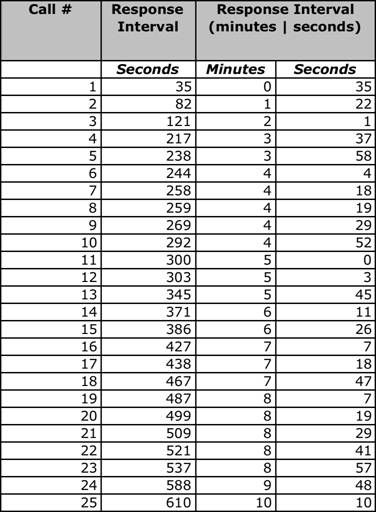By Mic Gunderson and Todd Hatley
Many EMS systems have established policies for how soon emergency responders are expected to arrive after a request for aid is received. These goals are often referred to as response time targets — but a more technically precise term would be a target response interval (TRI).
Interval is the more appropriate term because a “time” is a single point in time, while an “interval” is the amount of time that passes between two times, such as a call received time to an arrival or patient contact time. Many systems take an added step in specifying compliance with the TRI at least 90 percent of the time.
Large portions of the operational budget for an EMS system are determined by the number of vehicles, personnel and stations needed to meet the TRI requirements.
Given the close interrelationship between the operational budget and the TRI, the level of compliance in meeting the TRI is closely tracked by most EMS systems for both quality of care and financial reasons.
Performance in meeting the TRI is commonly monitored with the following response process performance indicators: Average; 90th fractile; and the % TRI compliance.
The average response interval is calculated just like any other average value — all values are added together and then divided by the number of cases. Using the responses for a single day, shown in the table below, the average response interval for that day was 352 seconds (5 minutes, 52 seconds).
The 90th fractile is the response interval for the call that falls on or above the point where 90 percent of the responses are less than or equal to it. The 25 calls for a single day in the table have been put into rank order, running from the shortest at the top to the longest at the bottom.
Eighty-eight percent of the calls are equal to or shorter than call number 22.
Ninety-two percent of the calls are equal to or shorter than call number 23.
Therefore, the response interval for call number 23 (537 seconds or 8 minutes 57 seconds) is the value used for the 90th fractile value.
If the system from which data were drawn had a TRI of 539 seconds (8 minutes 59 seconds), the percentage of calls that were equal to or less than 539 would give the % TRI compliance value. Using the data from the table, the % TRI compliance is 92 percent.
Response Intervals for All Emergency Responses on Sept. 1, 2010 in Somewhere County
 |












